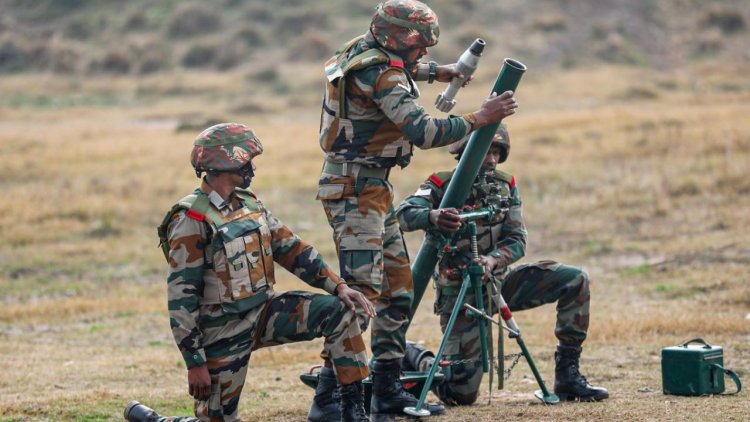Defence Budget: Analyses
Asia News Agency

The defence budget has been increased to Rs 5.94 lakh crore, 13 per cent up from the 2022-23 allocation of Rs 5.25 lakh crore. The enhancement, writes GP Capt Murli Menon Retd. (Defence Analyst) “includes Rs 10,000 crore addition in capital expenditure at Rs 1.62 lakh crore, a major portion of which would be for equipment and weapon acquisition from Indian private players for self-reliance.”
Revenue expenditure: The revenue expenditure of Rs 2.7 lakh crore, slated for maintenance of establishments as also payment of salaries and pensions, saw an increase of 15.89 per cent.
New acquisitions: The outgo towards new acquisition, writes Menon “of 126 4.5-generation MMRCA (Medium Multi-Role Combat Aircraft) for the IAF and the expected induction of indigenous and imported fighters for the Navy’s INS Vikrant carrier would be addressed by these allocations. The Navy’s procurement wish list includes submarines, guns, destroyers and underwater vehicles.
“The Army needs new light battle tanks, artillery guns, armoured vehicles, including those for the Ladakh front requirements.”
As the lead on the Budget before the 2024 General Election, Menon writes “these figures do not indicate any major escalation in our security stance externally or internally. At increases of 16.32 per cent, 10.96 per cent and 2.79 per cent for the Army, Navy and the Air Force, respectively, the budgetary allocations are not considerable when inflation gets factored in. The Border Roads Organisation (BRO) gets a substantial jump of 43 per cent in the Budget, clearly to cater for the urgent requirements to counter Chinese machinations along northern borders. The Defence Research and Development Organisation (DRDO) has been earmarked an outlay of Rs 23,264 crore, which is a hike of 9 per cent against last year’s allocation, once again barely enough to combat inflation. Capital expenditure increase for defence is a mere 6.7 per cent, against the nation’s overall capital expenditure commitments.”
Changed priorities: Nevertheless, says Menon “Rs 5.94 lakh crore out of Rs 45,03,097 crore total budgetary outlay, this year’s allocation signals the changed priorities of the government owing to incremental threats from China, while encouraging the indigenous industry to pitch in. At about 2 per cent of the GDP, our Budget compares poorly with Rs 18.86 lakh crore of China….”
Way forward is to indigenise: The only way forward is to indigenise and “encourage more private sector companies such as Tata and Mahindra to participate in defence production, especially in the medium and high-tech regimes. Premier institutes such as IITs and even private academic universities need to be incentivised to get into the defence sector to run academic courses that aid the defence industry….”
Clear signal to China
According to Harsha Kakar (military analyst) “there is no doubt that budget allocations will never be sufficient or equal to demands being projected by the forces. However, they need to be realistic. In the budget this year, defence was allocated Rs 5.94 lakh crore, which was under 2 per cent of the GDP and just over 13 per cent of government spending. It is low if suggestions of multiple parliamentary panels are considered. They have repeatedly demanded 2.5 per cent of the GDP…”
Upgrading existing capabilities: The budget exercise “would enable upgrading existing capabilities, create essential reserves as also develop infrastructure for troops in regions where Chinese salami slicing threats are more likely."
Capital outlay: The defence capital outlay was increased to Rs 1.72 lakh crore, which is just about Rs 10 lakh crore over last year, an increase of approximately 16 per cent. Of this, writes Kakar “the air force obtained the highest share of Rs 0.57 lakh crore, a marginal increase of 3.6 per cent from last year, the army Rs 0.37 lakh crore, an increase of 15.5 per cent and the navy Rs 0.52 lakh crore, an increase of 10.5 per cent…..” This is below the demands made by the forces.
Increase in allocation to the Border Roads Organization: But a major increase has been in allocation to the Border Roads Organization, which has enhanced connectivity along the LAC. Last year its allocation of Rs 3500 crore was 40 per cent higher than the previous year, whereas this year it was enhanced to Rs 5000 crore. This, says Kakar “sends a clear message to China that despite all their objections India is revamping its infrastructure….”















